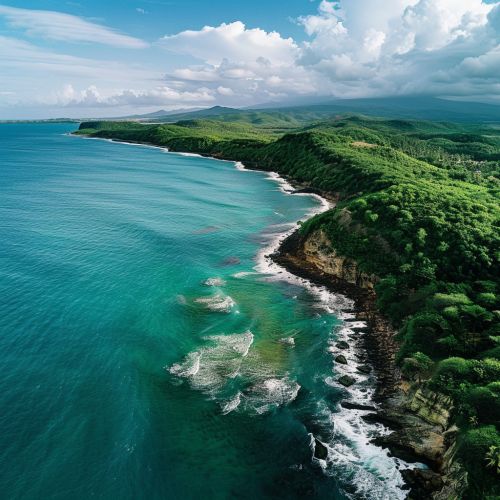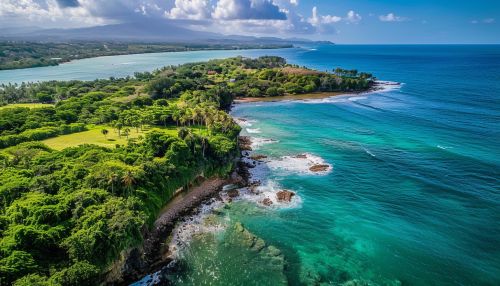Puerto Rico
Geography
Puerto Rico, officially known as the Commonwealth of Puerto Rico, is an unincorporated territory of the United States of America. It is located in the northeastern Caribbean, east of the Dominican Republic and west of both the U.S. Virgin Islands and the British Virgin Islands.


Puerto Rico is composed of an archipelago that includes the main island of Puerto Rico and a number of smaller islands, the largest of which are Vieques, Culebra, and Mona. The main island of Puerto Rico is the smallest and most eastern of the Greater Antilles. It is characterized by its mountainous interior, coastal plains, and coastal cliffs.
History
The history of Puerto Rico began with the settlement of the archipelago by the Ortoiroid people between 3,000 and 2,000 BC. Other tribes, such as the Saladoid and Arawak Indians, populated the island between 430 BC and 1000 AD. At the time of Christopher Columbus' arrival in the New World in 1492, the dominant indigenous culture was that of the Taínos.
The Spanish conquered the island, naming it San Juan Bautista in honor of Saint John the Baptist. The capital city of San Juan bears this original name. For four centuries, the island was a Spanish colony, with its economy based on plantation agriculture, mining, and the export of sugar, coffee, and tobacco to Europe.
In 1898, following the Spanish-American War, Spain ceded Puerto Rico to the United States under the terms of the Treaty of Paris. The island's status has remained as an unincorporated U.S. territory since then, with debates about statehood or independence continuing to the present day.
Politics and Government
Puerto Rico is an unincorporated territory of the United States with local self-governance. The government of Puerto Rico, based on a republican system, is composed of three branches: the Executive branch headed by the Governor, the Legislative branch consisting of a bicameral General Assembly, and the Judicial branch.
The political status of Puerto Rico is that of an unincorporated territory of the United States. As such, the island is not a sovereign state. It is subject to the plenary powers of the United States Congress. The people of Puerto Rico have been U.S. citizens since 1917, but they do not vote in U.S. presidential elections unless they reside in the mainland United States.
Economy
The economy of Puerto Rico is classified as a high income economy by the World Bank and as the most competitive economy in Latin America by the World Economic Forum. The main drivers of Puerto Rico's economy are manufacturing, primarily pharmaceuticals, textiles, petrochemicals, and electronics; followed by the service industry, notably finance, insurance, real estate, and tourism.
Despite these sectors, the island's economy has been in a state of decline for the past decade, with a public debt that exceeds $70 billion. The government is seeking to transform the economy into a knowledge-based one, focusing on sectors such as aerospace, information technology, and renewable energy.
Culture
Puerto Rican culture is a unique blend of Spanish, Taíno, and African influences, with recent influences from the United States. This fusion extends to almost every aspect of Puerto Rican life: our rich cuisine, colorful arts and crafts, vibrant music, and traditional festivals.
You'll find Spanish colonial architecture, dramatic landscapes, and a distinctly Caribbean vibe in Puerto Rico. The island's culture is famously friendly and welcoming, with locals known for their hospitality.
